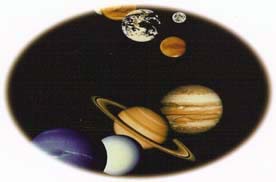This investigation will help you to:
Chapter 1: The Earth's Rotation, Eyes on the Sky, and Feet on the Ground,
Smithsonian Institution
This chapter looks first at the phenomenon of shadows (how they are made), then uses measurements of shadows to track the motion of the sun across the sky. The activities in this chapter challenge the students to quantify their observations and, in so doing, learn useful measuring and organizational techniques. The ability to measure and present data is an essential skill in any scientific investigation.
Your Weight on Other Worlds, Exploritiorium
Find out your weight on other worlds using this JavaScript based website.
Gravitational Froces Between Earth and Moon, NASA Cosmicopia
Learn about the gravitational forces on Earth and on the Moon.
Introduction to gravity, Khan Academy
Learn more about the gravitational differences in this tutorial from the Khan Academy.
Chapter 2: The Earth's Orbit, Eyes on the Sky, and Feet on the Ground,
Smithsonian Institution
This chapter provides activities and information on both causes and effects of the changing of the seasons. We start simply by trying to quantify the observation "it's colder in the winter" and end by measuring the tilt of the Earth itself.

